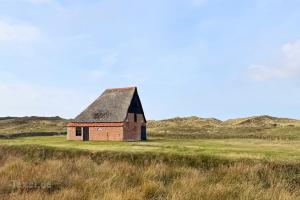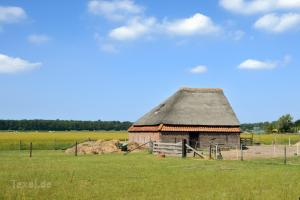Schapenboeten - Monument

Everywhere on Texel you’ll come across them: the characteristic Schapenboeten that give the island its unique appearance.
What makes the Schapenboeten so special?
- Typical Texel Heritage: The Schapenboeten, also known in the Texel dialect as skéépeboeten, are inseparable from the island’s landscape. They were once used for storing animal feed and tools.
- Cleverly designed against the wind: All boeten face northeast with their flat side, so the entrance door is sheltered. That’s no coincidence — on Texel, the wind often blows from the southwest!
- Not a sheep stable: Despite the name, sheep were never kept inside the boet. These sheds mainly served as shelter for farmers and storage for hay, straw, and equipment.

- Cultural heritage value: Many Schapenboeten fell into disrepair, but thanks to restorations and grants, dozens are now listed as monuments — preserving this unique part of Texel’s history.
Practical information
- View: Most Schapenboeten are on private land and cannot be viewed inside, but many are easily visible from public roads or walking and cycling routes.
- Visit and experience: Would you like to see a boet from the inside? You can do so at the Sheep Museum.
- Tip: The most beautiful examples can be found in Hoge Berg nature area, one of the oldest and most characteristic parts of Texel.
Walk, cycle, or drive through the Texel landscape and discover these unique little barns — silent witnesses to centuries-old farming traditions on the island.
Furthermore Schapenboeten is near the following sights: Speeltuin Beach Park Texel (±700 m), Bertusnol (±950 m), Covered Wagon Tours Jan Plezier (±1,0 km), Church of De Koog (±1,2 km) & Indoor Play Area Kogerstrand (±1,3 km).
For information
Paal, De Koog, Texel
